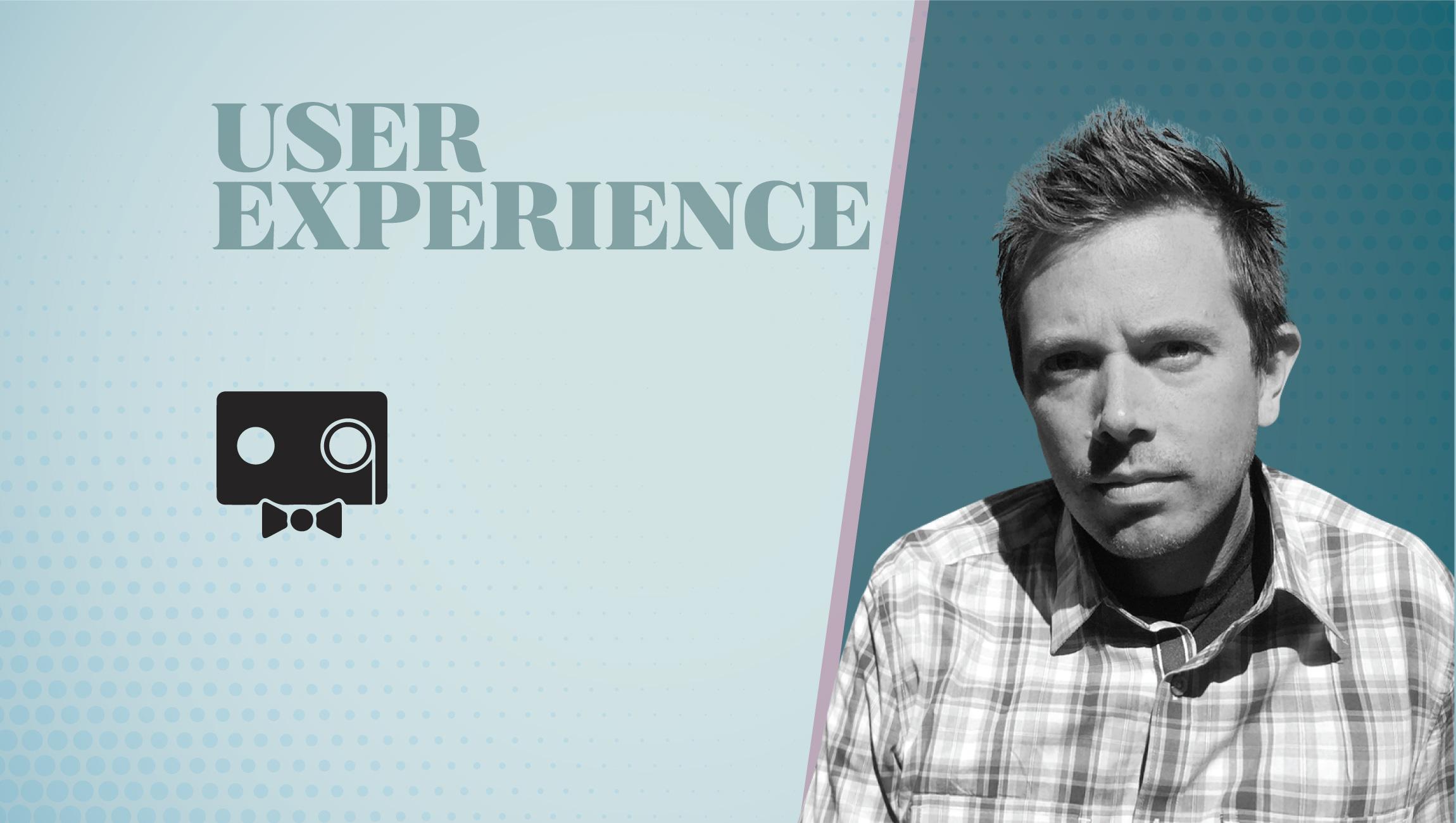Tell us about your role and technology you handle in the Company?
I’m the CEO and Co-founder of Charming Robot. My focus is on business strategy and user experience – understanding what the problem is that our clients are trying to solve and helping them find the solution. Often I’m an advocate for the consumer. My job is to figure out how to make consumer needs to align with my client’s business needs. We’re not developers, primarily; we do a lot of work on WordPress, Magento, Shopify — whatever makes sense. We’re agnostic about the platform. We want to create the right design experience for the client, so we work with developers to ensure that what they design makes sense.
As I describe in my new book, “The Barstool MBA,” designing digital products for different audiences is similar to designing a new bar. You need to keep your patrons in mind. A wine bar should feel different from an Irish pub, for example; a dive bar should smell a little off. When you go to CNN.com, you don’t expect to find a 20,000-word essay. When you go to NewYorker.com, you don’t expect to see three bullet points and four photos.
Moreover, it’s important to remember that the launch of a new site or company is just the beginning. Elsewhere in “The Barstool MBA,” I describe the way Skift Founder Rafat Ali changed the way his publication covers travel news because he noticed the way people were consuming his site’s content. You need to keep looking and learning; you’re never done.
How do you think about designing content experiences for different audiences?
We design content experiences not only for different audiences but for different businesses. CNN, The Wall Street Journal, and The New York Times each exist for different reasons, and their content experiences need to reflect that. People go to CNN.com to find out what’s going on right now. If they want to go deeper, they’ll visit The New York Times, so we’ll put in prompts for them to find greater depth. If you’re reading The Wall Street Journal, you’re probably doing so for your job, or to understand the global business impact of various events — so you may go even deeper into the content.
We think about the goals for your business, and how to marry those with a great consumer experience. We do it via research, talking with people about what they want from a particular brand, and we spend a lot of time watching the way people interact with sites on both their laptops and mobile devices.
When you design content experiences for audiences there are best practices – guidance for how to get people to sign up for an email newsletter, for example. There are elements every page should include. With The News Project, which we helped launch recently, we leveraged that knowledge to create templates that enable you to choose what works for any type of publication. For example, whether mobile or desktop, every page today needs to serve as a homepage. Each page has to give context to give visitors an understanding of what the publication is all about – especially a site that people may not be as familiar with. Our work with The News Project applies that philosophy to whatever a publisher wants to do.
What are the things you consider when creating media experiences for different audiences?
We begin by asking, number 1, What do we want people to do when they get there, and number 2, What do visitors expect from this brand? For example, we launched “The Block,” a publication for Blockchain aficionados. We know that the cryptocurrency audience is very opinionated, and shares its opinions freely on Twitter and Telegram. They speak their minds. So we made a site that’s provocative — to match the voice of the founder and community. We also know that people need to get through this content quickly. So we made the homepage something you’ll want to visit three or four times a day. We made it a read.
What are some universal best practices for designing content experiences?
- Make the content readable. Choose fonts and contrasts that make it easy for your audience to consume that content.
- On desktop, you want to keep things within a certain width – if it’s too wide, it’s painful to read. Make things scannable – chunks of text, headlines, subheads – and if you’re doing a longer piece of content, find a way to break up the flow so people don’t get bored.
- Look closely at your analytics. The analytics will tell you where the opportunities are to get people to do something – subscribe to an email newsletter, for example, or engage further.
- Just as important as what you should do is what you shouldn’t Sometimes it makes sense to copy what someone else is doing, but not always. Don’t assume that their approach works for your strategy.
Analytics give you quantitative data – you can see where people are going on your site, and where they’re not going – but it can’t tell you why people are leaving your site or signing up for emails. So as much as I love analytics, it’s just as important to watch people use the site. When we do this type of research in their home or their office. When you do that you can see where they get frustrated – where they actually put the mouse, rather than where they say they put the mouse. You can’t trust self-reports, either — because people don’t always know what they do. That’s why we watch it.
What, if any, is the difference between creating a media site for the general consumer versus a B2B audience?
Whatever you’re designing, it’s still for the same people, right? These are people who go to Facebook and Netflix. So you should keep asking, “What is our goal?”
We designed the Skift homepage several times, and each time we asked ourselves, “What does Skift need to do?” Each time the answer was different. The first time it was to communicate that the company was publishing news throughout the day in a timely manner. The second time it was to communicate the fact that they were offering research reports and events in addition to the news.
It’s about having those conversations — the audience is looking for this, and the business wants that. If you think too much “This is a B2B site,” you may forget that people are people and they just want to accomplish their goals. When we’re designing media properties, the same elements exist. If someone’s hiring The News Project, they’re getting all the elements they need for their content site.
How have you seen advertising models evolve over the past few years? What is working/what isn’t?
The media world has struggled over the years to find ad models that work. Many people say, “This time we’re not going to do banner ads – we’re doing sponsorships,” or whatever. Then, after they see what happens to revenue, they say, “We know these banner ads don’t work, but we have to have them.”
The Skift model is a good mix: some revenue from banner ads, some revenue from research, some from events. The important thing is to understand which model works for each site. The Block’s premium product is right for its audience, just as the subscription model works for the Wall Street Journal because in both cases you can’t replace that content for free.
If you’re a commodity – if you can get the same news on CNN that you can get on MSNBC, people won’t pay CNN for that news. But a site like BuzzFeed may be able to get Starbucks to pay for a listicle that it would have written anyway.
The models that have failed the most are the ad products that get in the way of consuming content. Popup ads are a bad look for both the brand that’s advertising and the brand of the publisher that runs them. They have a higher profit rate, but they frustrate users so much. Every site has to make these choices. In The News Project’s templates, we built-in room for sponsored content, programmatic advertising, newsletters – all options are there for the clients that want them.
With mobile being such a big aspect of consumption today, how do you balance the mobile web vs. app experience?
I think that apps for content sites are kind of a joke. You might be able to get people to download it, but to get them to open it – the odds are so slim. Most people go to news sites through side doors – Twitter or Google or WhatsApp – so you should really focus on the mobile web more than on the app.
If a client insists on it, I’ll generally push back and try to communicate why this isn’t the best way to spend their budget. In the end, we may agree to do the project, but we would insist that there be a true strategy for it. Honestly, though, I rarely see a path to success. Many people today like to say, “We want this site to be mobile-first,” which is funny. It’s important that a site works well on mobile devices, of course — but that doesn’t mean that the laptop or desktop should look like the mobile site. The desktop version can be much more visual. The mobile experience is more about scrolling. People’s habits are different on different devices, so each experience has to work.
How could new technologies like AI ML impact the adoption of Mobile Marketing and Experience technologies?
Many people seem to imagine that AI is much more advanced than it actually is. We see a number of “chatbots” that are actually run by people. I think AI ML is kind of gimmicky right now – Quartz did something that was cute to look at but not very useful.
The intelligence that says, “When you come from Google you’re more likely to click on different articles than you would click if you came from Facebook” – we’ve been doing that for ten years. It doesn’t take AI, and it’s not top-of-mind right now. We’re focused on making sure that we understand how we can leverage tech to serve the business right.
The real answer to this question is “We don’t know,” because what happens in technology is a new technology comes along, people use it and do it wrong because they don’t know what people really want. So then the technology goes away. And then people come back to it later when they have a better sense of what to do with it. I don’t see a good case for AI that shows me where it has helped, yet. Nothing in my recent work leads me to believe that there’s a smart AI solution going forward. That said, I’m not an ad-tech guy; there may be a solution somewhere else that I don’t know about.
AI has real applications for bars, though — my other passion. With a lot of POS systems, the bar can tell you something – “When Dan comes in after 11 pm, he buys a cocktail; when he comes in before 11, he buys a beer.” That kind of intelligence can improve your customer relationship, by improving your engagement and helping you grow the customer’s spending. So I see AI as being more useful, today, for bars than for websites.
Dan’s keen aptitude for strategy has helped countless brands rethink their digital products. He is responsible for re-imagining traditional business models and reinventing them for the digital age. His innovative approaches helped launch Hulu in 2007, and the online subscription-based model of the Wall Street Journal a year later.
Through his work, Dan has become a trusted advisor to many well-known startups including Rent the Runway, Foursquare and FitStar, one of the top 10 grossing fitness apps on the iTunes App store, successfully exiting to FitBit in 2015. Dan is Co-founder of the product design company, Charming Robot, based in New York City and is the host of his own podcast, Story in a Bottle, which profiles the careers of some of today’s most successful founders, venture capitalists, and designers. In 2019, Audible released Dan’s book, The Barstool MBA, which examines the lessons from the bar business that apply to create digital products.
Charming Robot is a boutique digital product design studio specializing in product strategy, user experience, visual design, and branding. For over 20 years, each of our partners have been creating, launching, and evolving experiences for start-ups, non-profits, and larger media companies.
We know that a brand is defined by the experience your audience has with it and use our understanding of your users to create a positive and successful digital experience for them. We use our years of research into user behavior to ensure that our clients are creating brands and products for actual people instead of chasing trends and delivering experiences designed around corporate buzzwords.
We believe that the best working relationships are forged through a combination of partnership and planning. While many organizations talk about partnering, we live it. From iterative development to seamless and consistent communication flow, we create and maintain partnerships with our clients that surpass typical expectations of client and agency models.
Our deep expertise in project planning keeps projects running smoothly and expectations managed throughout the project. We engage in transparent discussions that encourage open communication during every interaction with our clients — we don’t waste time in jargon or babble. Our ability to successfully achieve all of the above means that we build great relationships and deliver excellent projects for our clients.













Comments are closed.